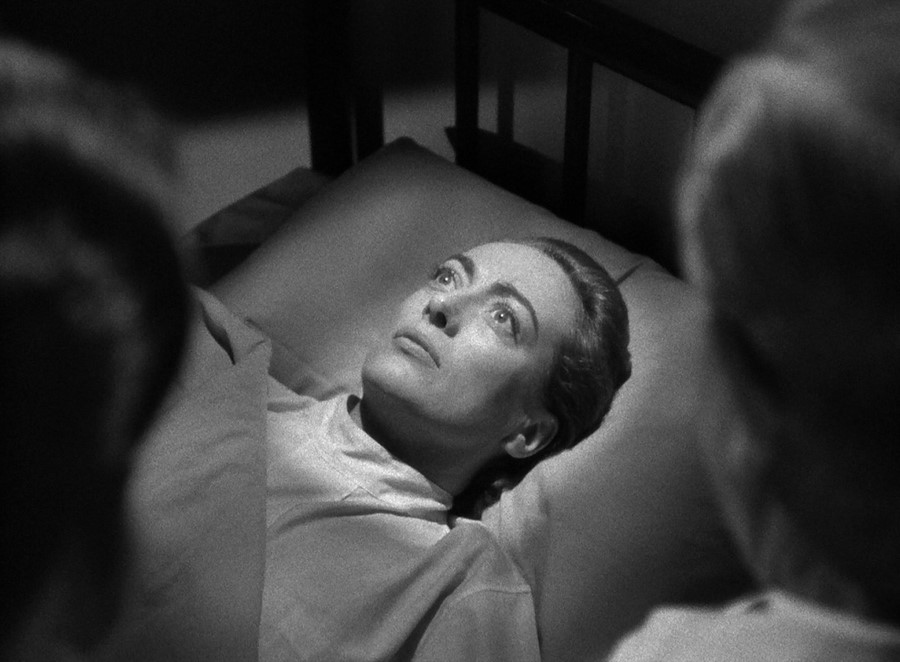A look at some of the “untameable” Crawford’s later forays into frightening films
Joan Crawford had enjoyed a successful film career for close to 20 years – in both silent movies and ‘talkies’ – and was considered one of the most beautiful women in Hollywood history when, in 1938, she was labelled ‘Box Office Poison’. It was an attack not on Crawford’s acting skills, but the high payments she and the dozen other stars also deemed poisonous would demand for their films – salaries so large they inhibited profits. In 1943, Crawford moved from MGM to Warner Bros, and her time at the latter studio marked a career renaissance for the actress. The success of 1945’s Mildred Pierce – for which Crawford won her first and only Oscar – was followed by two decades of both similar triumphs and less favoured films, a slew of which were of the horror-thriller genre. Advancements in film technology from the 1940s and 50s saw a renewed interest in the terrifying, which had never before appeared so real, and Crawford’s varied starring roles – from helpless victim to axe-wielding killer – drew people to cinemas. As the BFI celebrates Crawford with a season of screenings, we look at some of the formidable star’s scariest offerings.
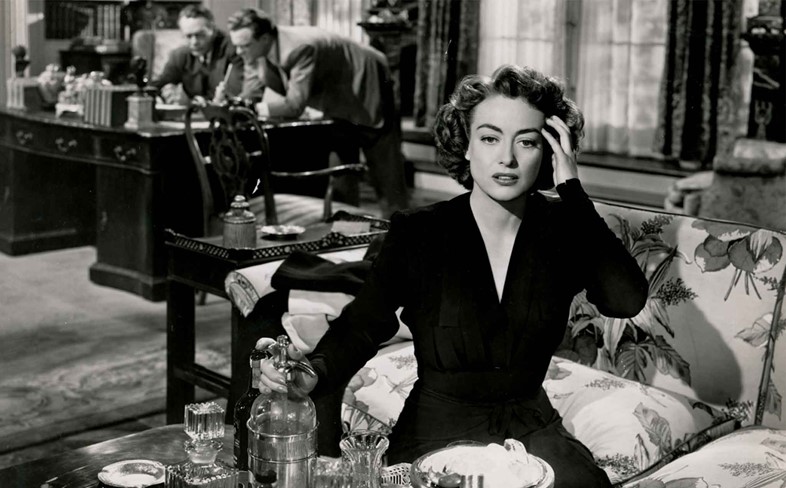
1. Possessed, 1947
Crawford rarely played to type when it came to her characters in scary films, and the women she portrayed are multifaceted – often unsettlingly so. Take 1947’s Possessed: the actress felt that the part of Louise Howell, a paranoid, guilt-ridden and obsessive woman suffering from schizophrenia, was the most difficult she ever played. Louise becomes an object of fascination in Possessed, viewed with pity by the doctor she tells her story to after she is found wandering the streets of Los Angeles murmuring ‘David’. Though she is central to the film, Louise is a passive figure, whose stability hinges on the love and attention of various male characters; though she kills her estranged husband David, it takes her doctor and her employer (whose wife, it is hinted, Louise may also have murdered) pledging their support for her to appear saved.
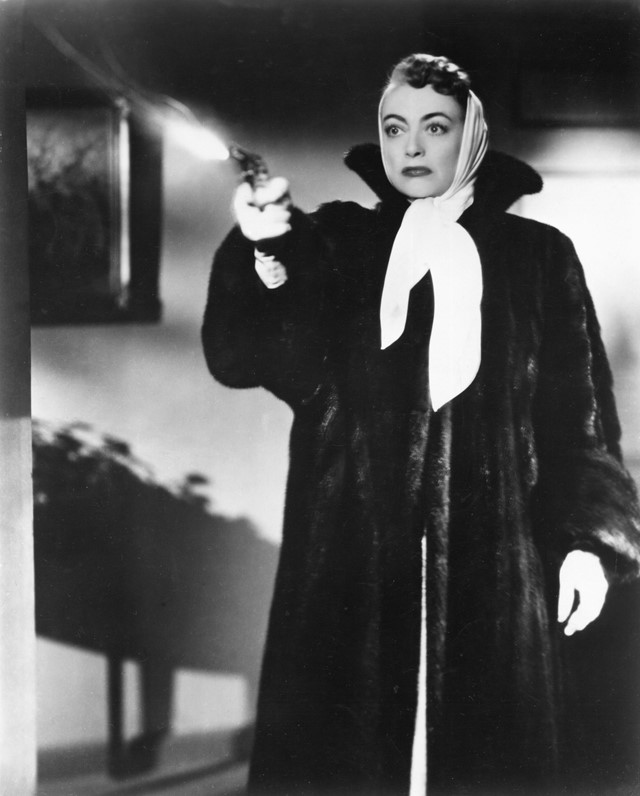
2. Sudden Fear, 1952
Deemed “undoubtedly one of the most stylish and refined woman-in-distress noirs” by Spencer Selby, Sudden Fear sees Crawford play Myra, a successful playwright caught up in various murder plots; firstly as victim, targeted by her husband and his lover, and then as killer, as she plans revenge on the scheming couple. Sudden Fear is one of Crawford’s most cinematic thrillers – director David Miller capitalised on San Francisco’s eeriness to create a film rich in suspense, and it’s seeing Myra oscillate between anguish, terror and vengeance that makes for a gripping watch (Crawford’s performance was ultimately nominated for an Academy Award).
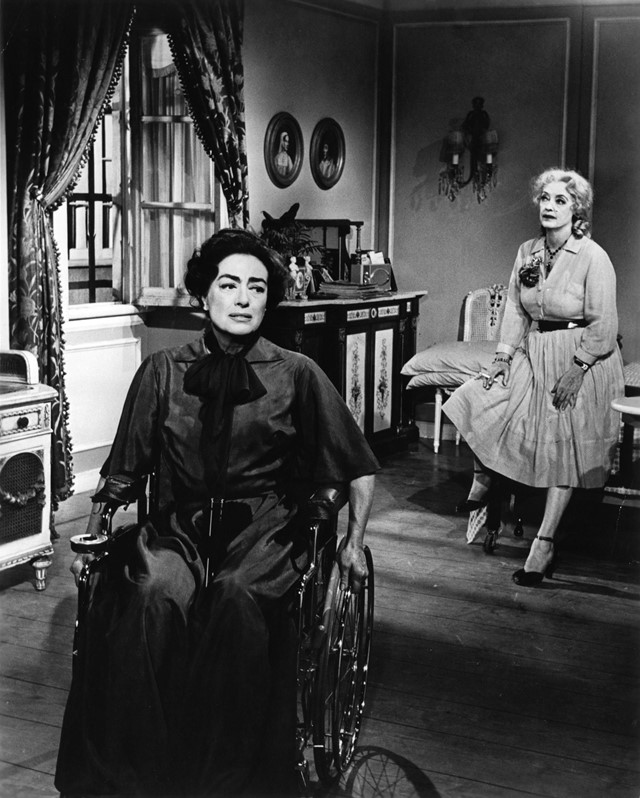
3. What Ever Happened to Baby Jane? 1962
Various incidents that occurred during the filming of Robert Aldrich’s What Ever Happened to Baby Jane? between the film’s lead actresses, Crawford and Bette Davis, have become legends of Golden Age Hollywood. The two screen stars famously maintained a rivalry (recently dramatised in Feud, with Jessica Lange playing Crawford and Susan Sarandon as Davis) that supposedly lasted decades. Both phenomenal actresses, they were intensely competitive during the making of What Ever Happened to Baby Jane?; Crawford purportedly carried weights in her pockets during filming of a scene in which Davis had to drag her around, while Davis as Baby Jane Hudson (the original psycho-biddy) is supposed to have hit Crawford hard enough to warrant stitches during another. The psychological horror earned Davis an Oscar nomination (much to the chagrin of her co-star), and Crawford’s turn as the calculating invalid sister Blanche has gone down in cinematic history.

4. Strait-Jacket, 1964
Following the immense success of What Ever Happened to Baby Jane?, Strait-Jacket and its “vivid depictions of axe murders” was an attempt to further revive her waning career, but became one of Crawford’s campier horror films. William Castle, the film’s director and producer, enlisted the 60-year-old actress to promote the film across the country in character – she would walk through movie theatre audience as Lucy Harbin, brandishing an axe for the gimmick. Crawford plays the unhinged, manipulative murderess, just released from a psychiatric hospital and subjected to gaslighting by her own daughter Carol who, two decades after witnessing her mother decapitate her father and his lover, embarks on her own killing spree. (Like mother, like daughter.)
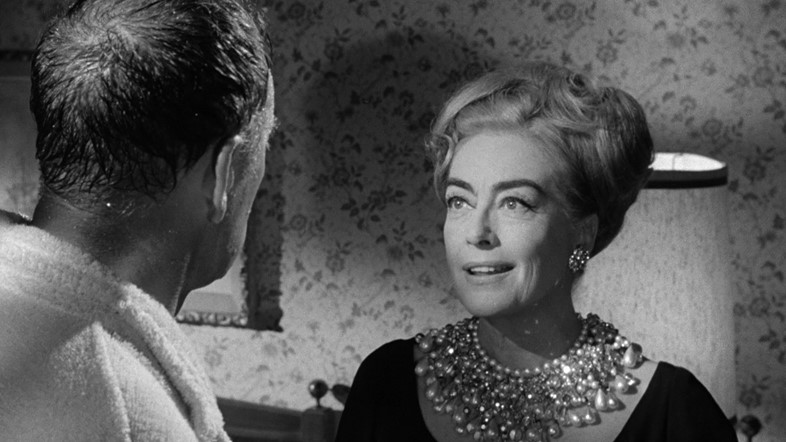
5. I Saw What You Did, 1965
Crawford plays the jealous seductress to perfection in 1965’s I Saw What You Did, the plot of which follows two teenagers and uxoricide Steve Marak after a prank call gone violently wrong. Her character, Amy Nelson, may be – spoiler alert – fated to a gruesome end at the hands of Marak, the neighbour she is attempting to seduce, but Crawford’s scenes are highly memorable (thanks in part to the tremendous crystal and pearl necklace she wears – a piece of jewellery large enough to double up as armour). There is little of the traditional victim in Amy Nelson: with her hair piled up on her head and the aforementioned costume jewellery, she is formidable in both appearance and personality, chasing off Marak’s would-be younger woman and subsequently blackmailing him over his wife’s murder in the space of ten minutes.
Fierce: The Untameable Joan Crawford is at the BFI until October 9, 2018.
